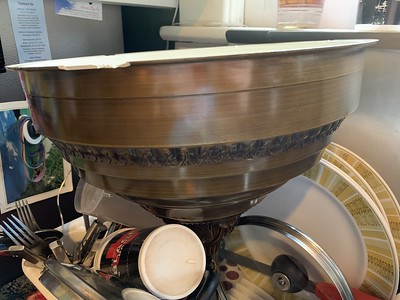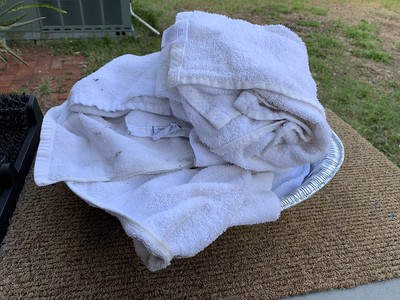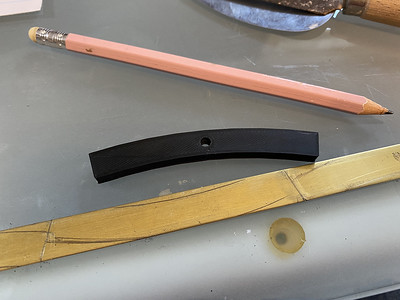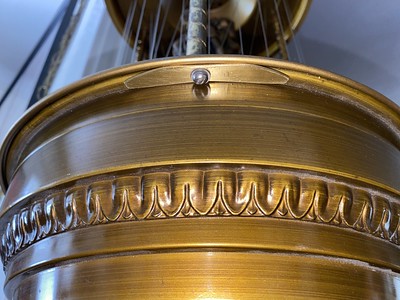Way back in April of 2019 the bottom of our rain lamp fell out and dropped 4 quarts of mineral oil on the dining room floor. The cleanup required a mountain of towels which will never come clean and will only ever be useful to turn sticks into torches. We were dismayed and uncertain as to how to fix the cracked plastic. The rain lamp base is the oil reservoir and attaches to the base of the rain lamp with three small bolts and acorn washers. The attach point for each bolt had completely disintegrated and there is no way I would trust a two-part epoxy to support the weight of 4 quarts of mineral oil.
What did I do? I put off trying to fix it for ages (literally years). I had the idea to get a ring cut out of aluminum or sheet metal from a fab shop, but I was dubious that a shop would want to do a small one-off piece for a reasonable amount of money. The prospect of me cutting out a completely symmetric circle from a piece of sheet metal with a dremel was well outside of what I wanted to spend my time doing, so I just didn't do it.
Fast forward to the middle of the pandemic. I saw a person in the neighborhood with a 3D printer printing up loads of standoffs for face mask shields. I reached out to him and asked about the probability of him 3D printing a potential solution for my rain lamp problem. He said he'd try, and eventually I received three different shim types from him. One of the three shims seemed like it would work, but I only ever got the one shim 3D printed from him (I needed 3) and he hadn't responded to a message I'd sent in over five months. I took the one workable shim prototype and used it to cut 3 shims out of some K-S brass strips I had from another project.
With my husband's help, we sanded down the shims to fit under the lip of the oil reservoir, marked and drilled the bolt holes for each of them, and reassembled the rain lamp with new, improved non-disintegrating, weight distributing brass bolt supports.
If you have a rain lamp, beware that it is probably reaching peak plastic brittleness and you could find yourself with 4 quarts of mineral oil on your dining room floor. We were lucky that it happened while we were home, awake, and could quickly mitigate the large pool of mineral oil that hit the floor. If your lamp hasn't bottomed out yet, perhaps you should take a few moments and make some shims to prevent against a mineral oil disaster in your own home.
If you need to restring your oil rain lamp, I have a how-to for just that very thing!
















